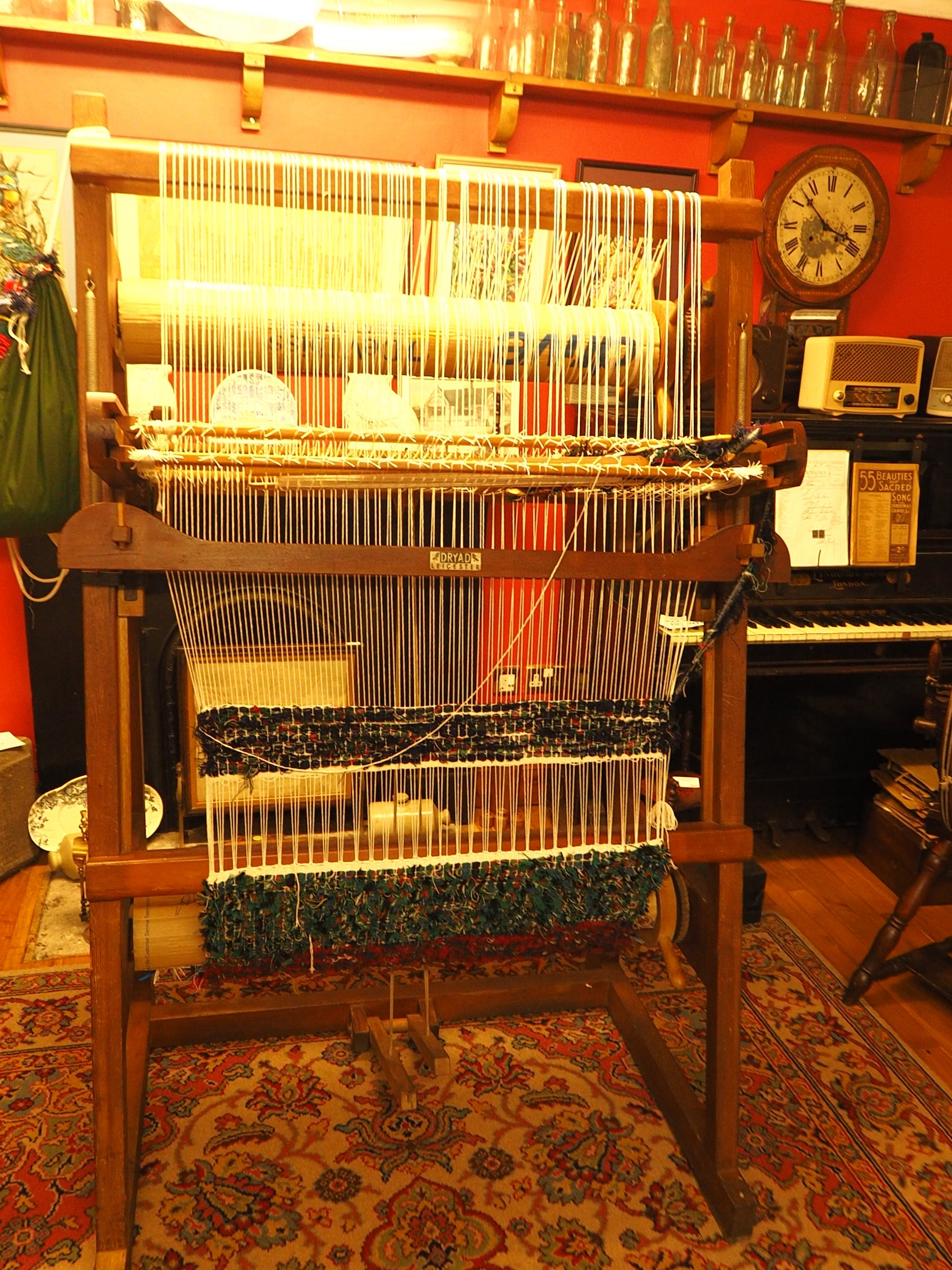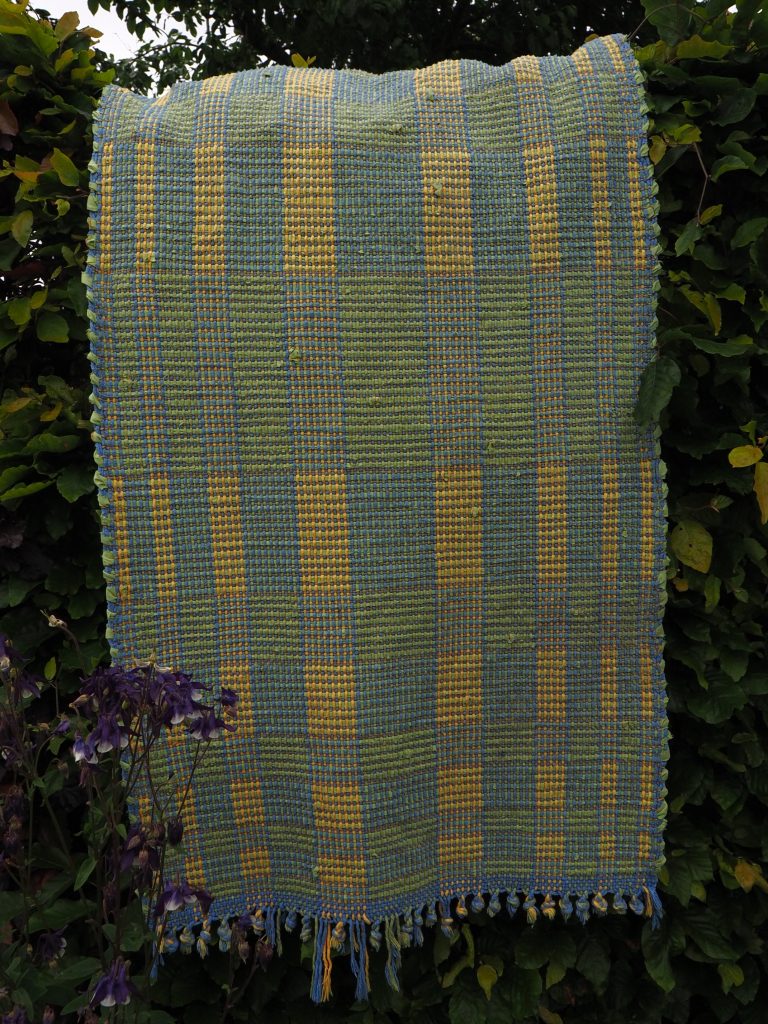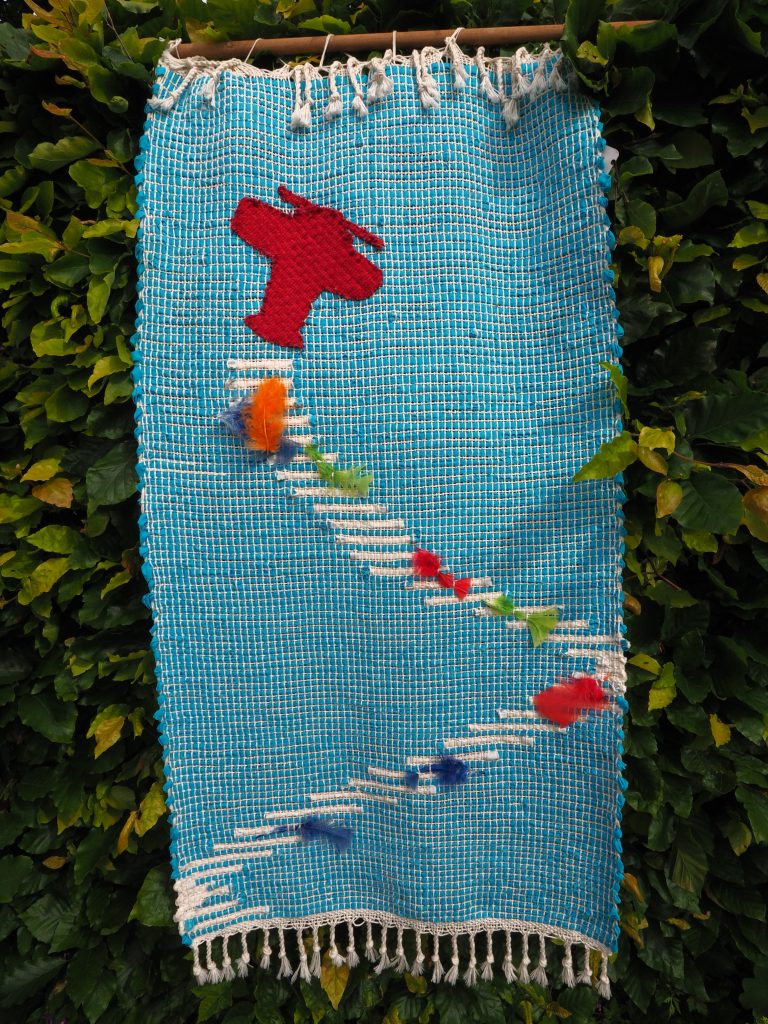

Officially “the Dryad Foot Power Rug Loom”, this is an upright design that looks at first glance a bit like a tapestry frame but it’s actually a 2-shaft floor loom stood on end so the front beam is at the bottom. The ‘A’ frame is made from pitch-pine, very strong and rigid, ideal for making big stuff like floor rugs. It’s also very access-able… the beater can be used from a chair without having to lean forwards, and the shafts can be set by hand as well as with the treadles. Nowadays I use it mostly for beginner weaving workshops. With big yarns like the selvedge waste shown here or recycled curtains weaving about 3 picks per inch, it’s possible to make a 5-foot rug in a day!
These (I have two) were rescued from the occupational therapy room of an old hospital in Dundee, when it was being converted into flats. Years of cold and damp had left the wood a bit dull, metal a bit rusty, and the original cotton heddles frayed and brittle. Some gentle hours with wet & dry paper, steel wool, soap, and linseed oil fixed the underlying mechanism, then a bit of simple woodwork adjusted the shafts to take modern Texsolv polyester heddles.
Going beyond the basic stripe & colour patterns, here’s a couple of more adventurous pieces made on the Dryad 2-shaft loom.
This Fibonacci ‘repp’ rug uses a fine intermediate weft to switch between warp colour pairs (blue / green, blue/yellow). It’s interesting how the eye tends to interpret the blocks as quite different colours even though the weft is the same throughout (lime-green charity shop curtains!).


And this collage wall hanging made by my daughter. The vapour-trail pattern was built-into a continuous ribbon, a bit like space-dyed knitting yarn, so very quick to weave once that weft had been constructed…
The design used Dave Raup’s amazing ‘RugDsign’ program in ‘Shwoosh’ mode… https://www.subudesigns.com/downloads.cfm
This freeware program helps to visualise the finished piece on-screen, and produces dimensions for fabric panels that are sewn together, then cut like bias-binding to make the continuous ribbon weft.